PAULINE – “My vocation is…to draw…close to Him.”
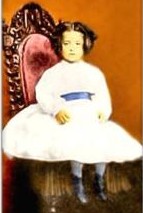
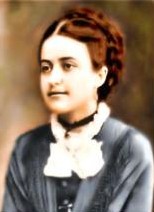
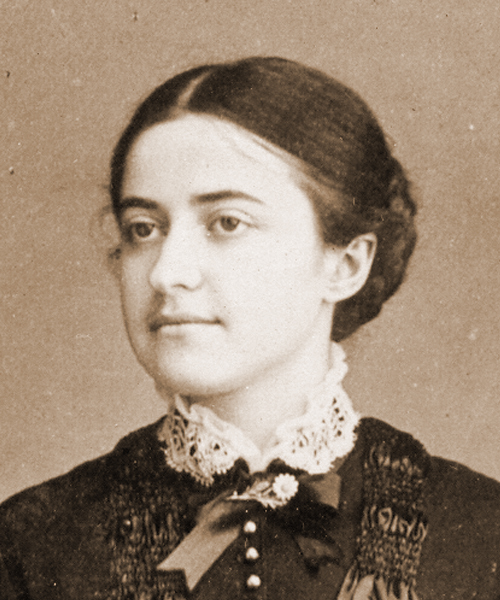
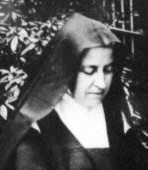
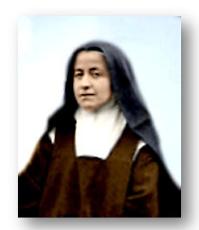
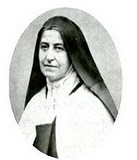
On September 7, 1861, Marie Pauline Martin entered into the world with brown hair and brown eyes—resembling her mother both in personality and in looks. Pauline was energetic and could accomplish many things in a short span of time. From the start, she was very affectionate and had a soft, angelic voice—but also a fiery temper.
Family life in the Martin household was filled with much excitement in all its simplicity. They would gather around the piano and sing, and the girls would play draughts (checkers). But after, Marie and Pauline would then bring out a catechism book and read it to the rest of the family before their evening prayers. Pauline developed a love for painting, using the attic as her studio. She painted watercolors, which her father then framed. When Louis went on trips, he would bring back some shells, ivory, or parchment, so that she could paint miniatures on them. She also spent time learning to sew and do needlework. When the family spent time at the Pavilion during the Summer months, Marie, Pauline, and Léonie were each given a small plot of land to cultivate and plant vegetable and flower gardens.
Generosity was always important in the Martin family home. The poor would congregate outside the family’s home every Monday to receive some charitable gift. Thérèse would meet them at the front entrance to find out their needs and would then relay these to Pauline, who would decide what to give them. Pauline was the first of their children to exhibit any interest in becoming a nun. Her aspiration was to become a Visitation nun like her aunt, Sr. Marie-Dosithée.
In early 1877, Pauline found out about her mother’s breast cancer. By the time Summer arrived, Zélie’s health had reached the point where only God could save her. Pauline was convinced that if they went to Lourdes, her mother would be cured. And so Zélie, Marie, Pauline, and Léonie all took the train to Lourdes. As Pauline and her sisters watched their mother get dunked in the icy cold waters of Lourdes day after day, it became apparent she was not going to be cured. With deep regret, they boarded the train for home.
On August 1, 1877, Pauline completed her studies at the Visitation boarding school and, back at home, assisted Marie in preparing Léonie, Céline and Thérèse in their studies. By the end of August, the pain from Zélie’s cancer spread throughout her body. As Pauline sat beside her, Zélie grabbed and kissed Pauline’s hand and then pointed to her sisters, signaling that she was relinquishing all of her responsibility as a mother to Pauline, who was not quite sixteen years old. Zélie died around midnight that night. Afterwards, Pauline had a dream of an angel writing in the sand, “Blessed are those that mourn, for they shall be comforted.” This was a confirmation to Pauline that their mother’s soul was in Heaven.
After spending five years at Les Buissonnets, Pauline felt it was time to answer the call to religious life. On February 16, 1882, while praying beside a statue of Our Lady of Mt. Carmel, Pauline had a revelation that she was to become a Carmelite nun. When Pauline told her father, he was concerned because of her frequent headaches and nausea. However, he said, “My Pauline, I give you permission to enter, but do not think that there is no sacrifice on my part, for I love you so much.” Thérèse, however, took the news very hard. She ran to her bedroom and started crying. She felt betrayed that Pauline was going to leave for Carmel without her. Pauline consoled her by saying, “My vocation is not where I live or who I live with. It's simply a call from the Lord to draw me closer to Him.”
Following her decision, Pauline began making frequent visits to the Carmelite monastery in Lisieux to speak to the prioress about entering. But at the time there was no room for her, so she looked into entering the monastery in Caen. However, as she was about to go there, a postulant at the monastery in Lisieux suddenly died, creating an opening for her. So, on October 2, 1882, when she was twenty-one, Pauline entered the Carmelite monastery in Lisieux as a postulant. On April 6, 1883, she became a novice and was christened with the name of Sister Agnes of Jesus.
Pauline used her extraordinary talents to paint religious images on cards, letters, and statues—some sold to the public to support the Carmel. For the faithful, she wrote lovely works of poetry promoting God’s unconditional love. Pauline was also tasked with organizing the dining area for each of the community’s meals. She even got permission from the Prioress to continue to prepare Thérèse for her First Holy Communion. On May 8, 1884, Pauline made her profession to the Carmelite Order; on July 16, 1884, she had her veiling ceremony, witnessed by her family.
By January 1889, after nearly seven years in the Carmel, Pauline’s severe headaches became constant, making it difficult for her to perform her duties. Thérèse, who had herself entered by this time, was very worried and wrote her in a note, “Please don’t die! Wait for me so that we may both go together to our Homeland.”
In August of 1890, Pauline was verbally attacked by the prioress, Mother Marie de Gonzague, which cut deep into her heart. To add to this, Pauline was suffering from bronchitis, forcing her to be moved temporarily into the infirmary. It was a difficult period of time for her—both emotionally and physically. Thérèse encouraged Pauline to use each humiliation and physical suffering as a means of saving more souls.
On February 20, 1893, Pauline was elected the new prioress. Mother Marie was shocked as she did not expect to be voted out. She grudgingly said to Pauline, “If the majority of your sisters chose to give you their votes, it was because you were trying to reproduce the virtues which Mother Geneviève practiced.” At the beginning of her term, Thérèse prophesied to her that her reign would not go without receiving many “thorns” for Jesus. The prophecy was not far from being a reality. From criticizing Pauline’s handling of the novices to her management of the monastery finances, Mother Marie continuously challenged Pauline’s authority and verbally lashed out at her in front of the entire community. Through it all, Pauline continued to be loving towards her. Witnessing these confrontations, Thérèse said, “Pauline is a saint. That’s why she is not spared from Mother’s wraths.” Thérèse wrote her a note, saying, “…even if everyone refuses to do what you ask, I will be obedient.”
By 1951, as Pauline’s health declined even more, Céline (who had entered in 1894) spent most of her days with her. One month before Pauline’s death, Céline described her thus: “She is as sweet and serene as possible, totally abandoned to God.” By mid-July, a priest was called to hear her Last Confession. On July 28, Pauline died at the age of 89, surrounded by Céline and her whole community. A funeral Mass was conducted on August 1, with dignitaries and followers of St. Thérèse in attendance. Like Marie, she was buried inside the vault beneath the shrine chapel at the Basilica of St. Thérèse.
To read more about the life of Pauline Martin, go to www.martinsistersorg.
